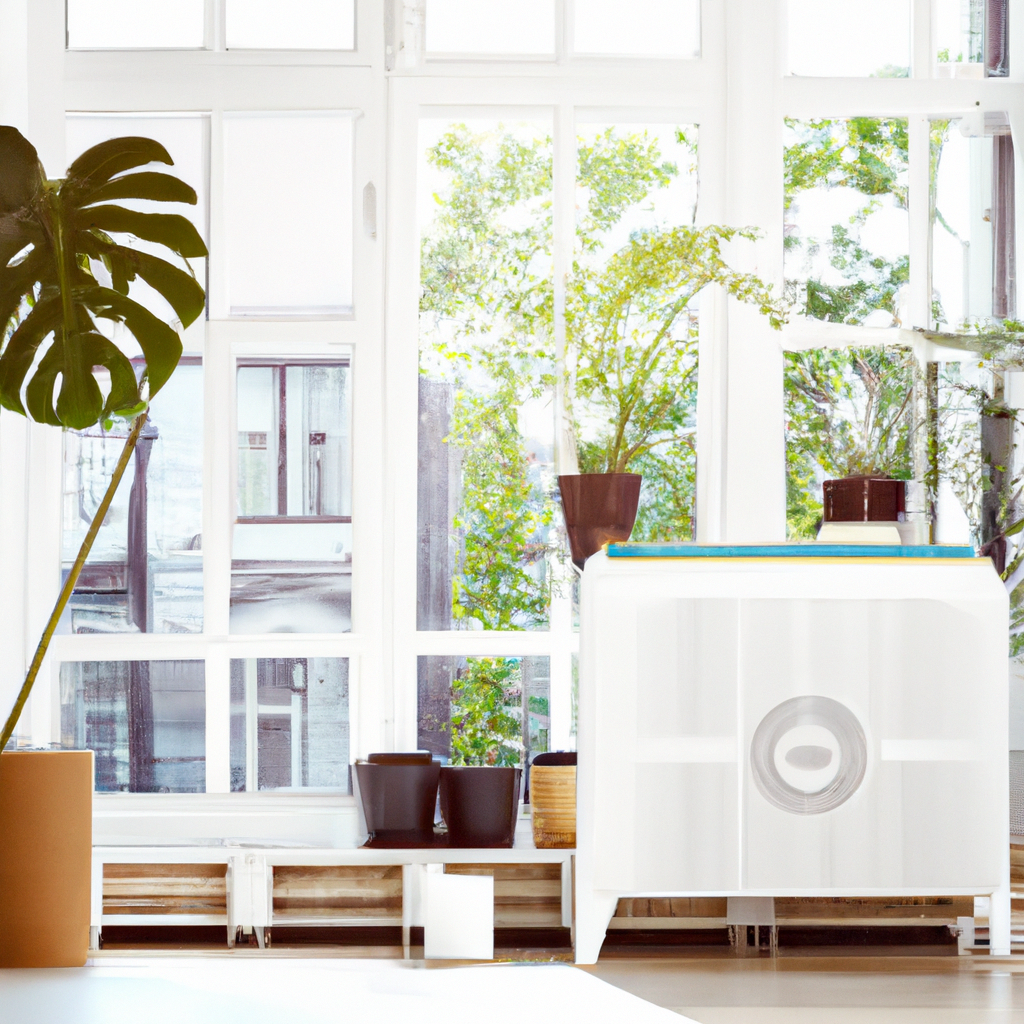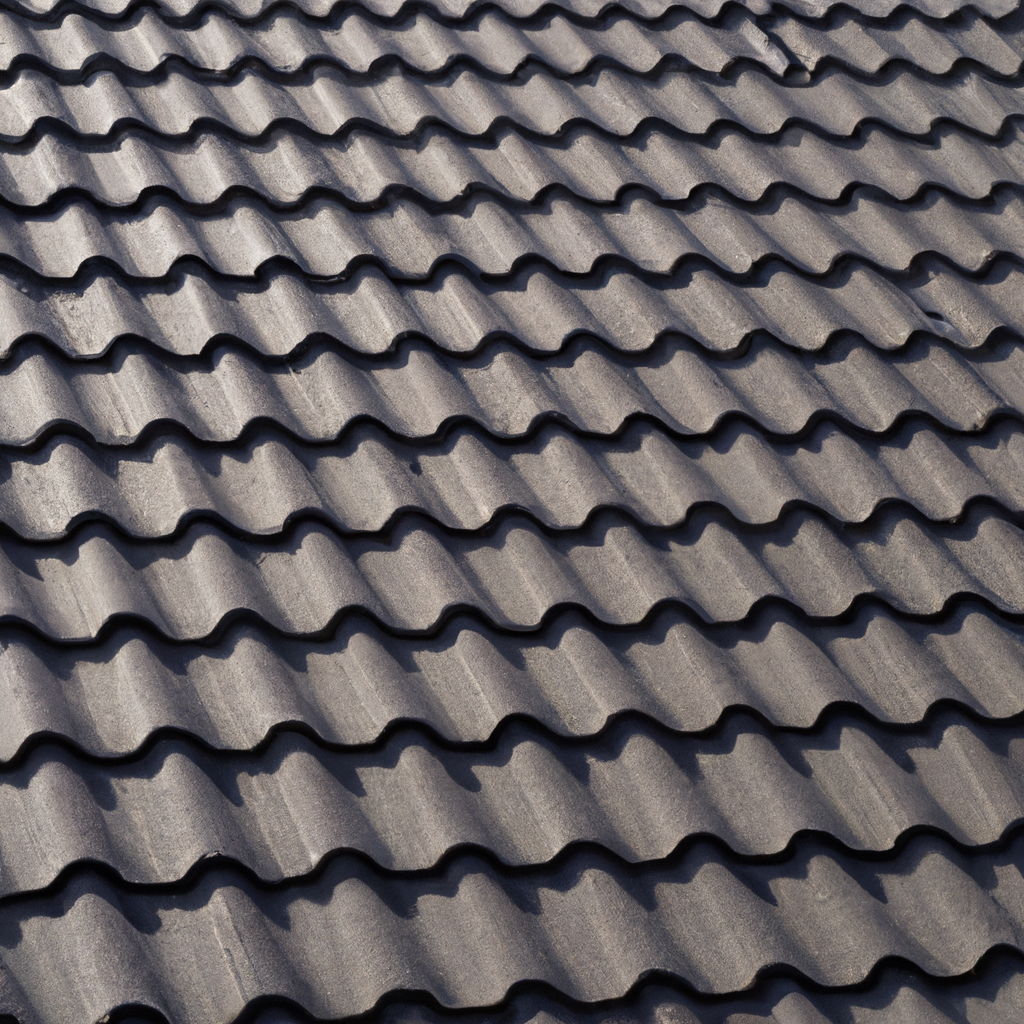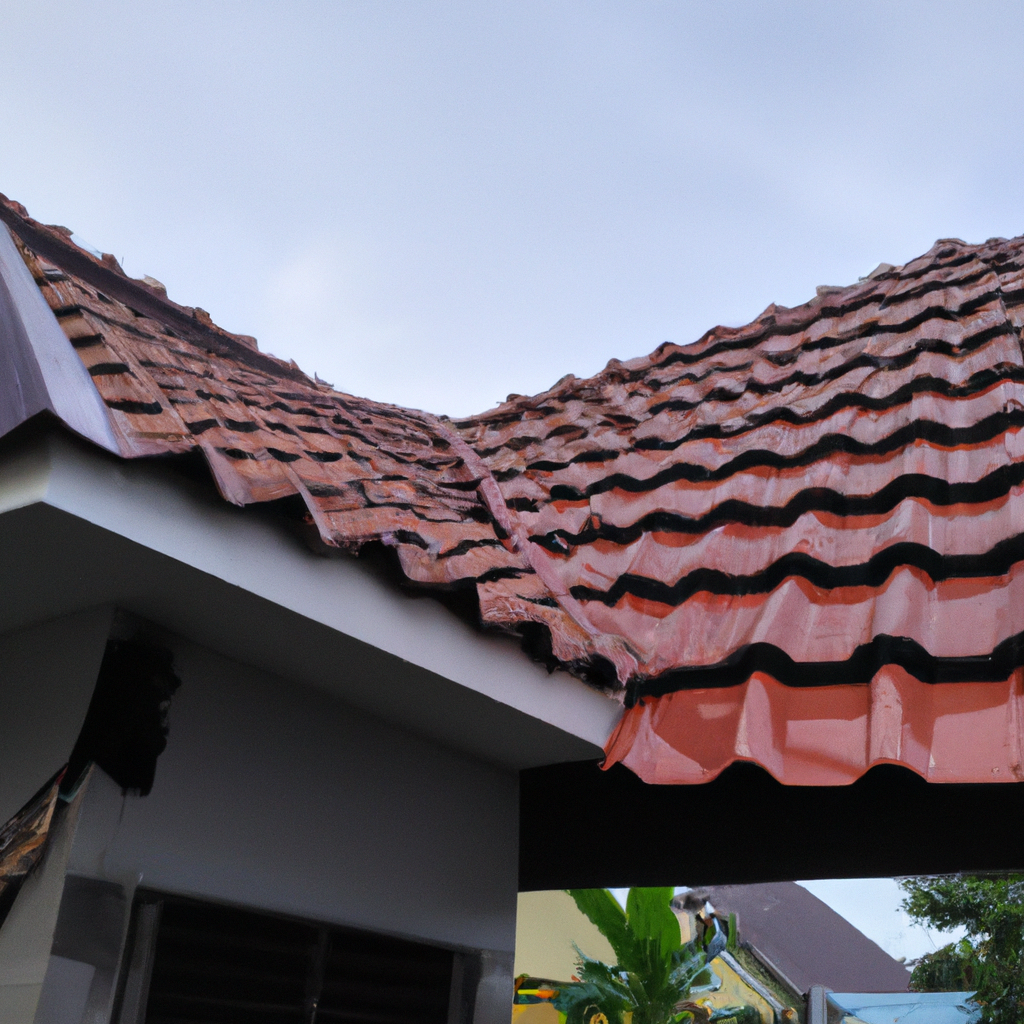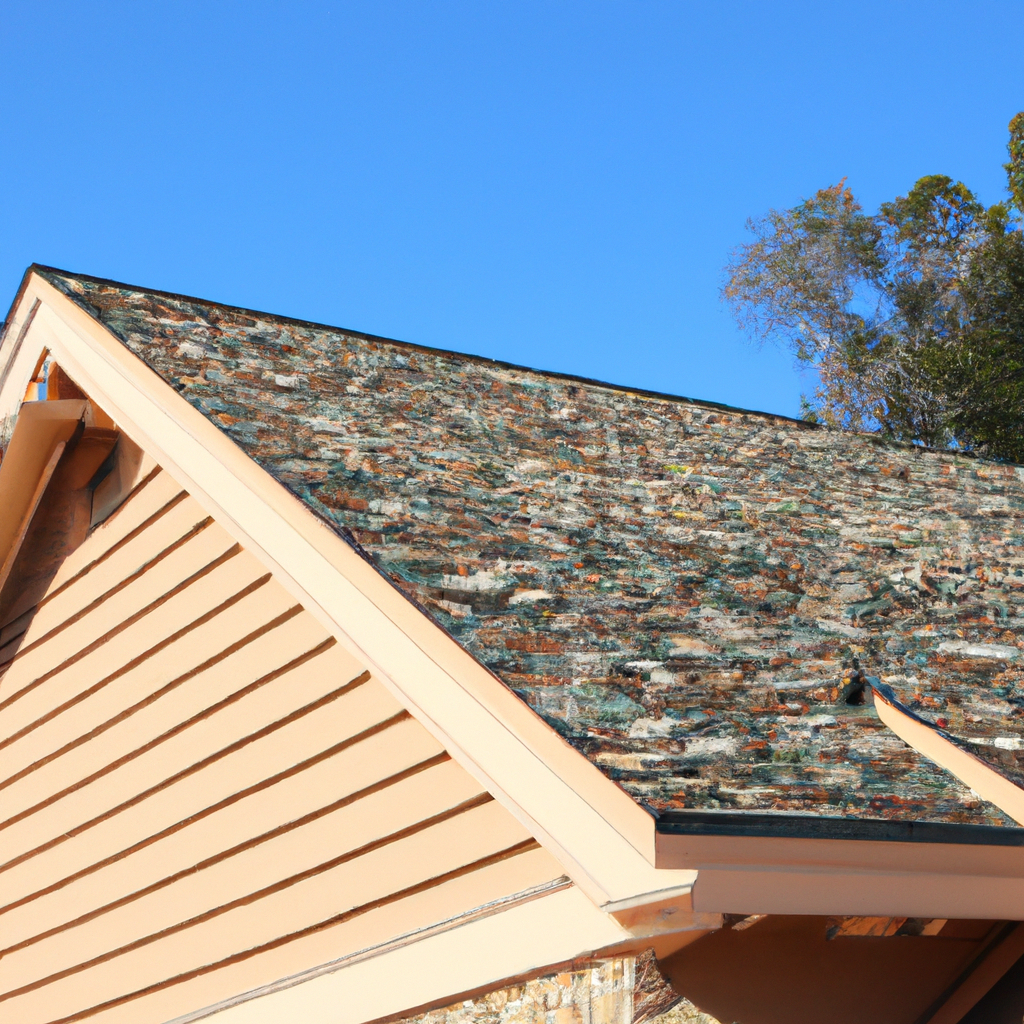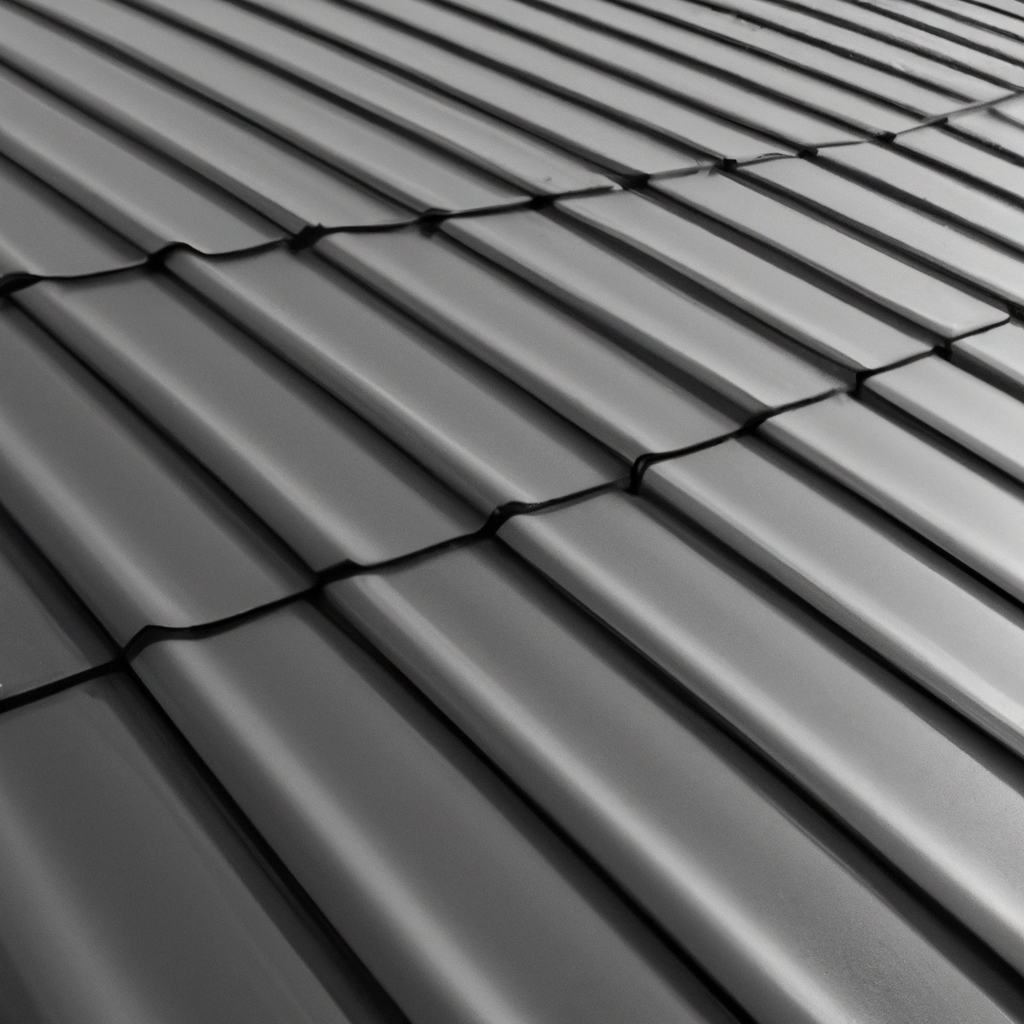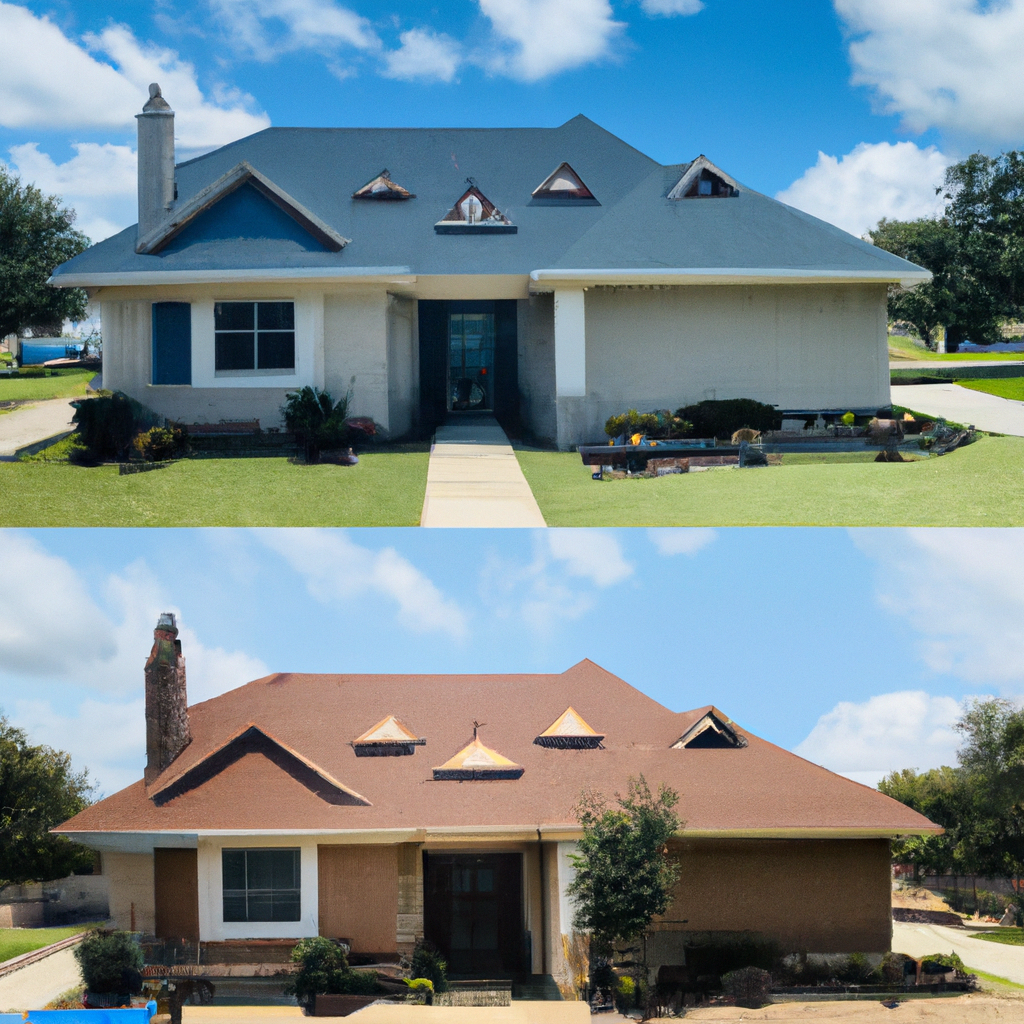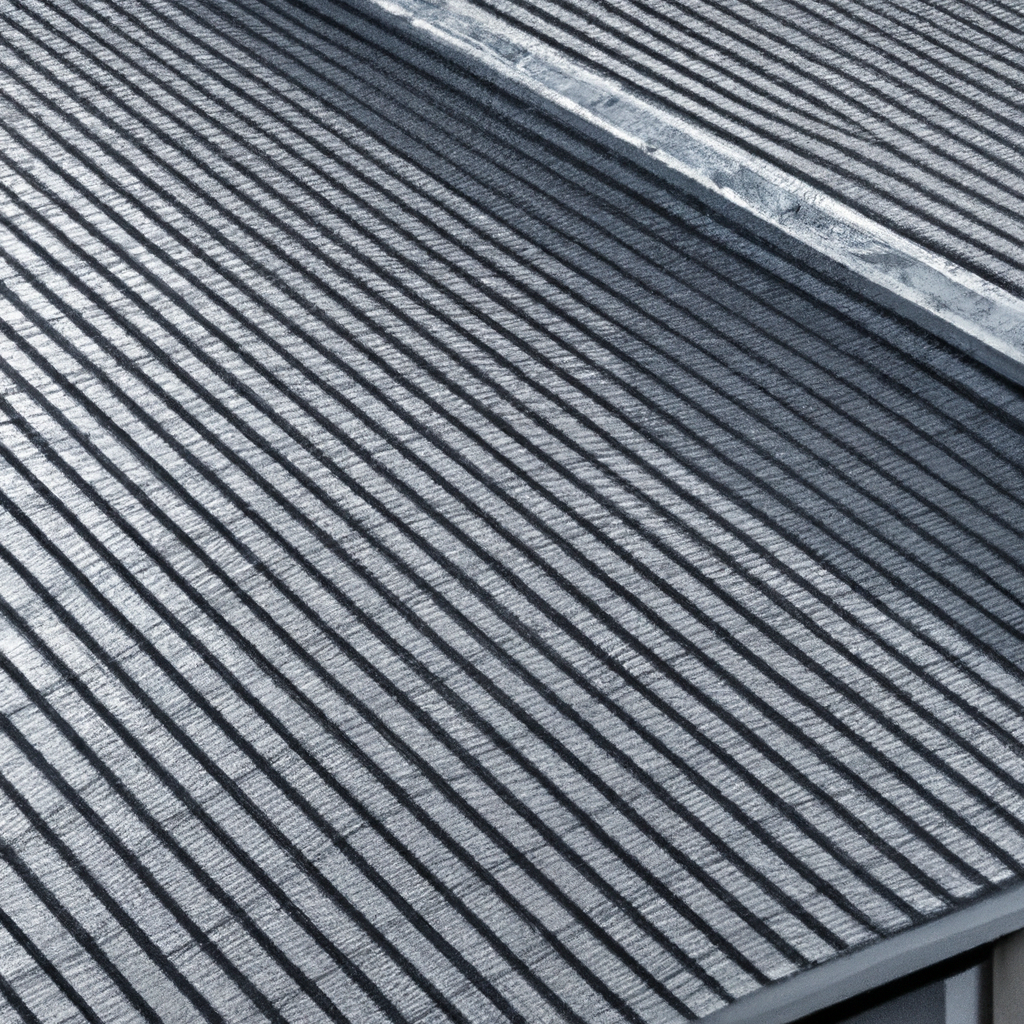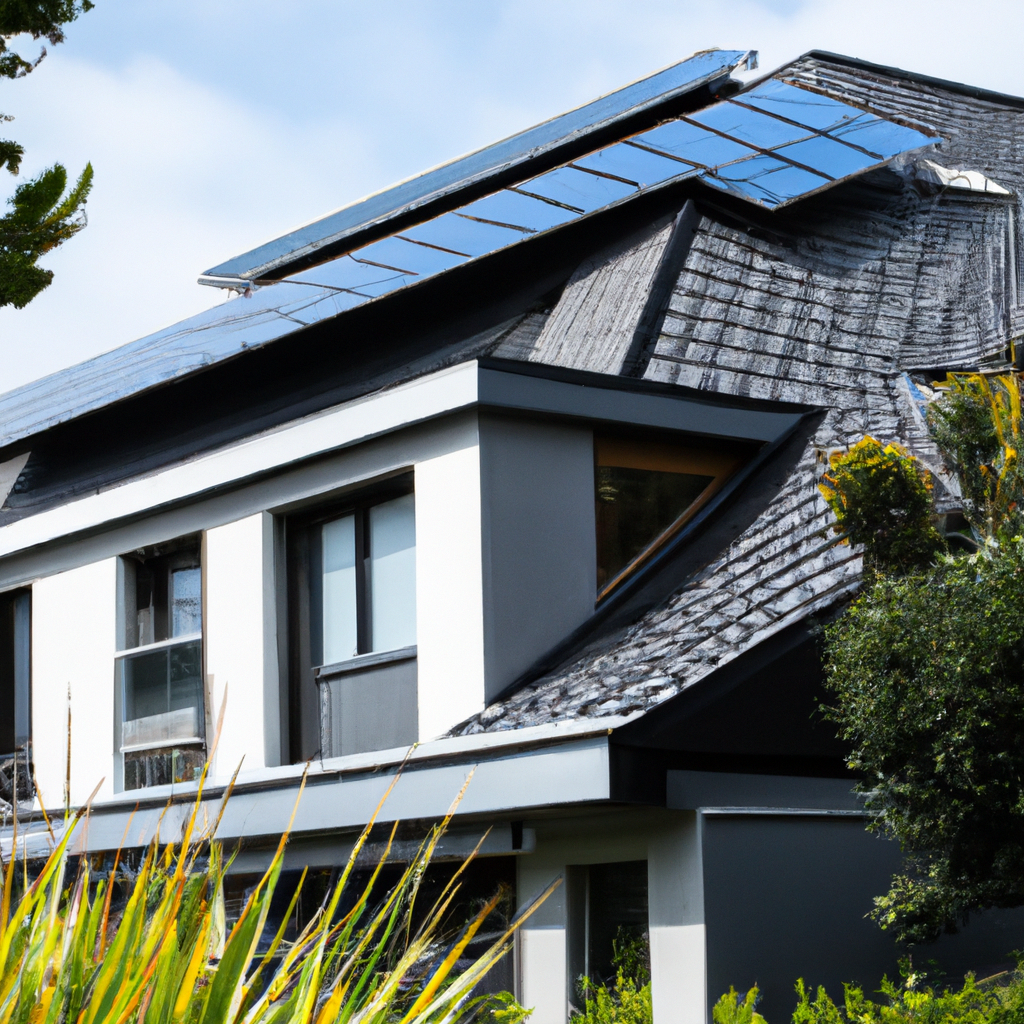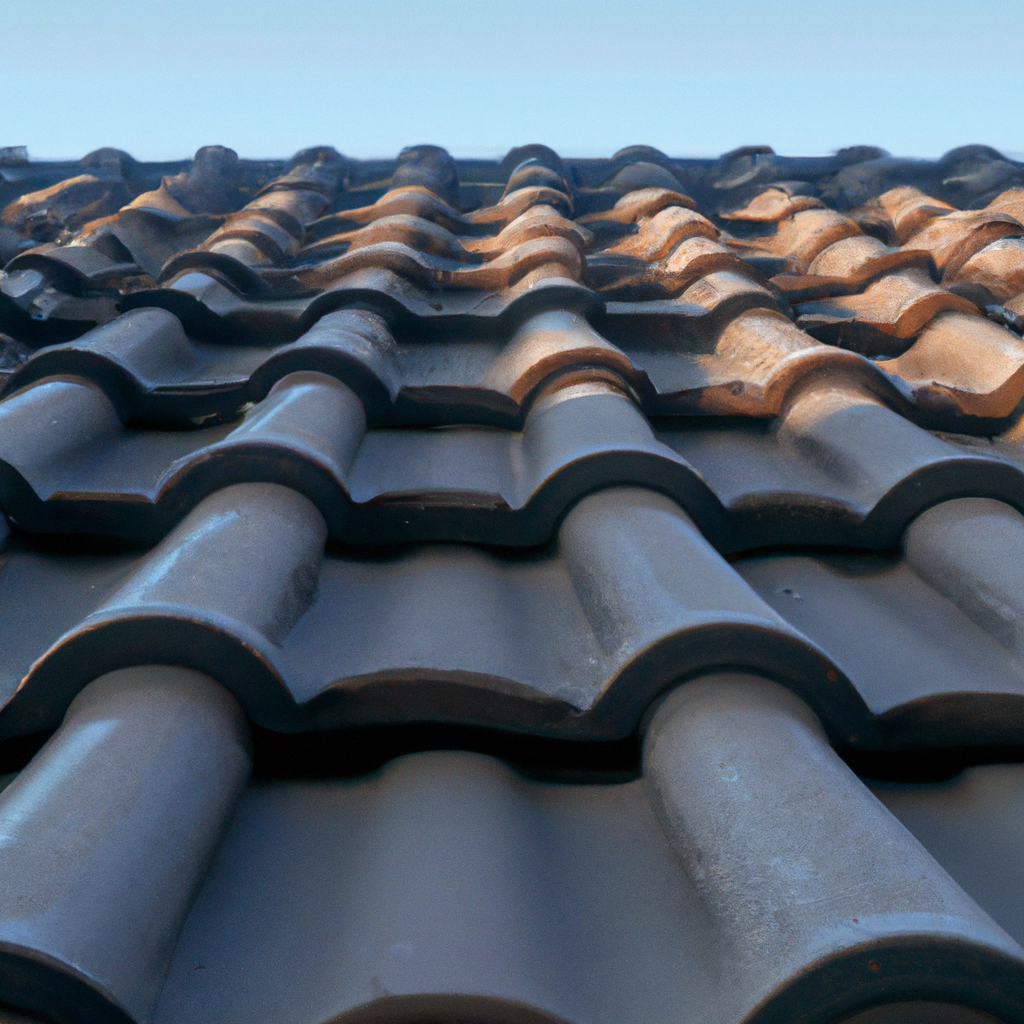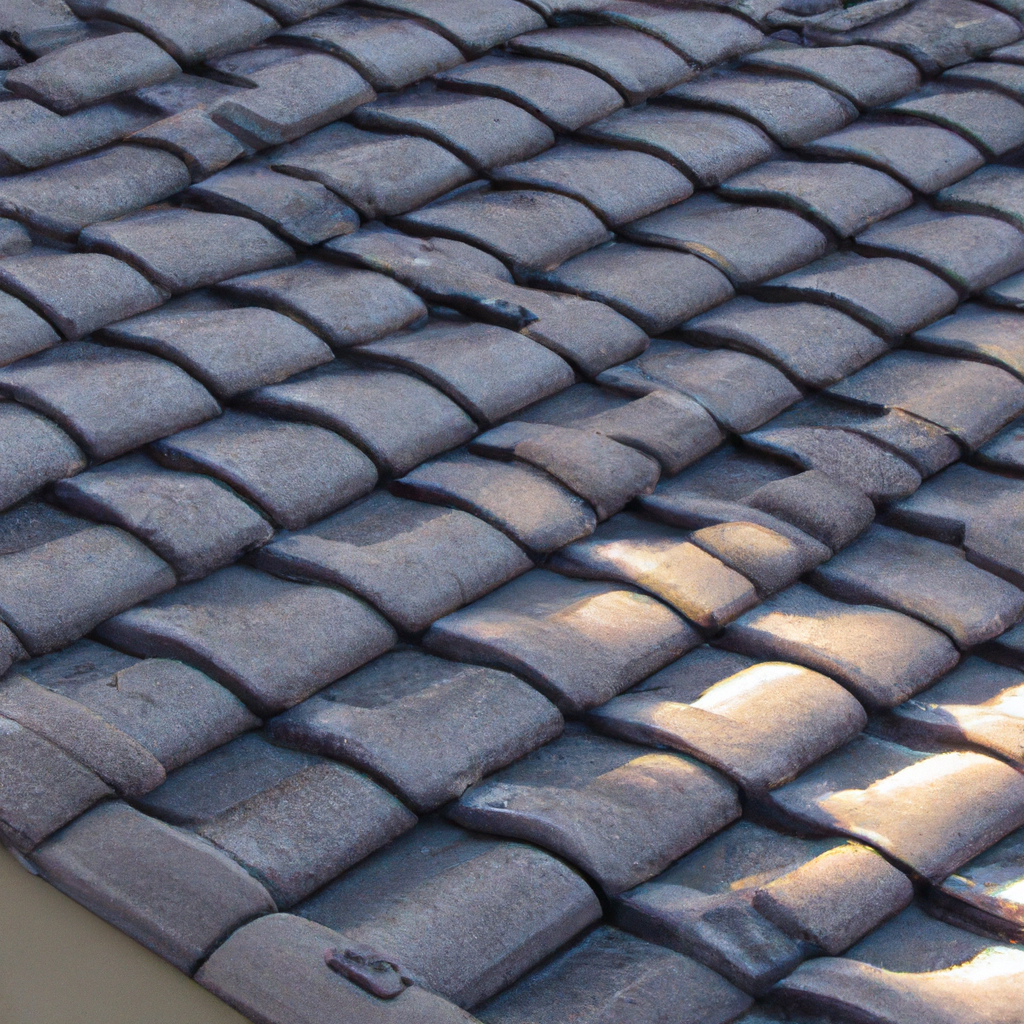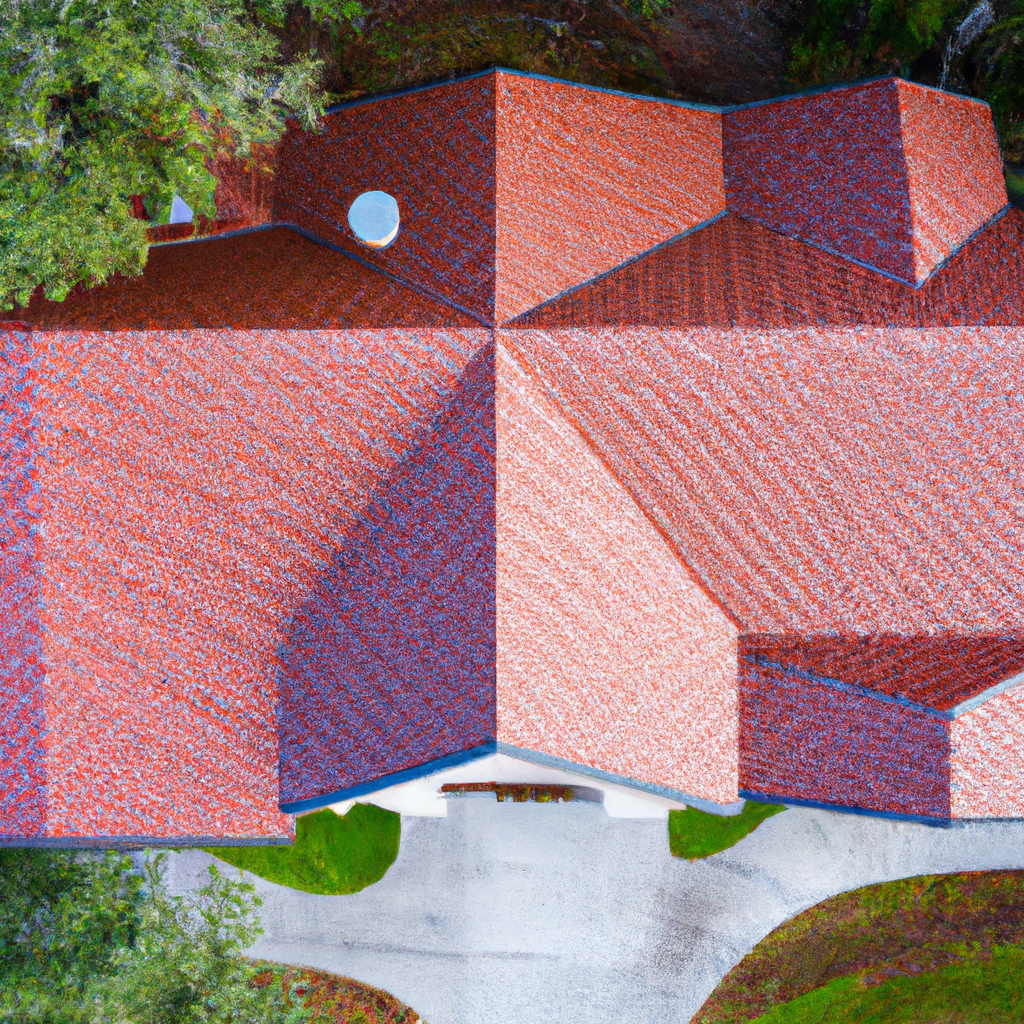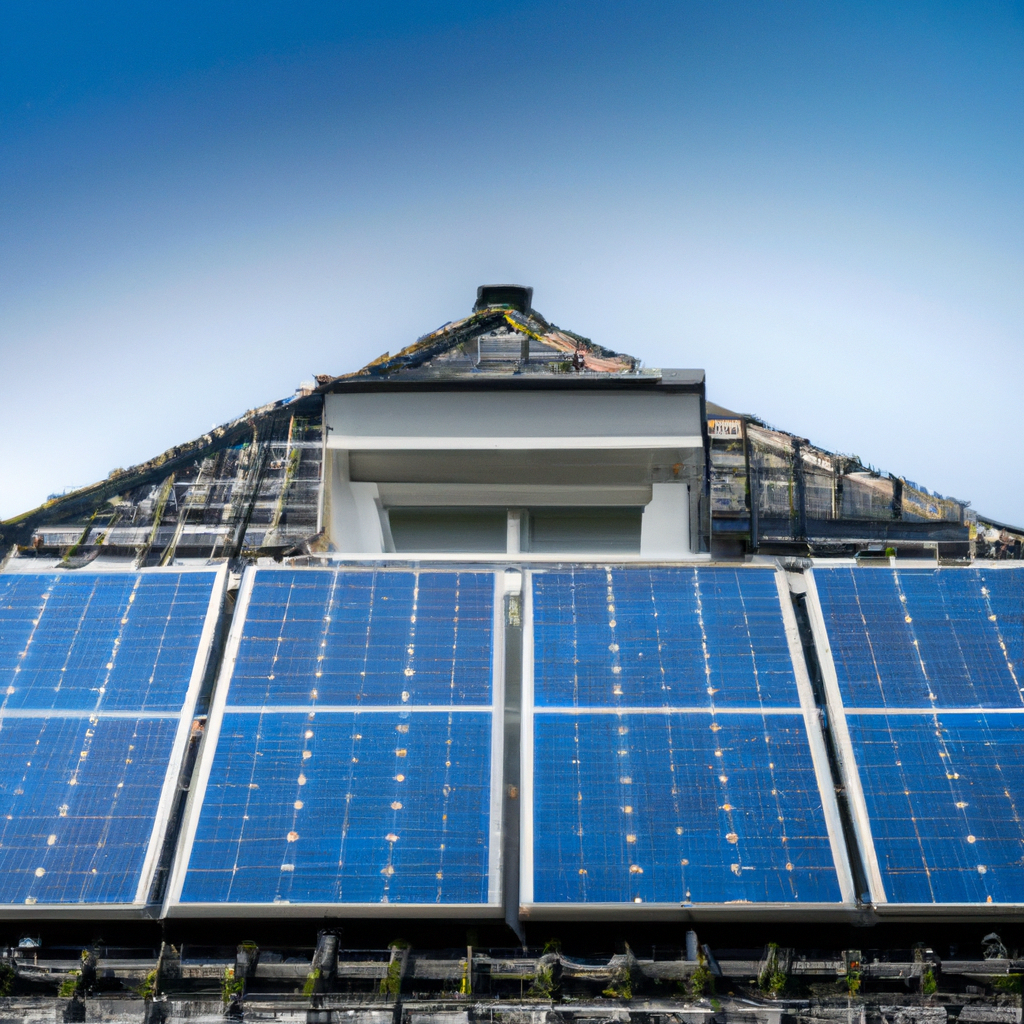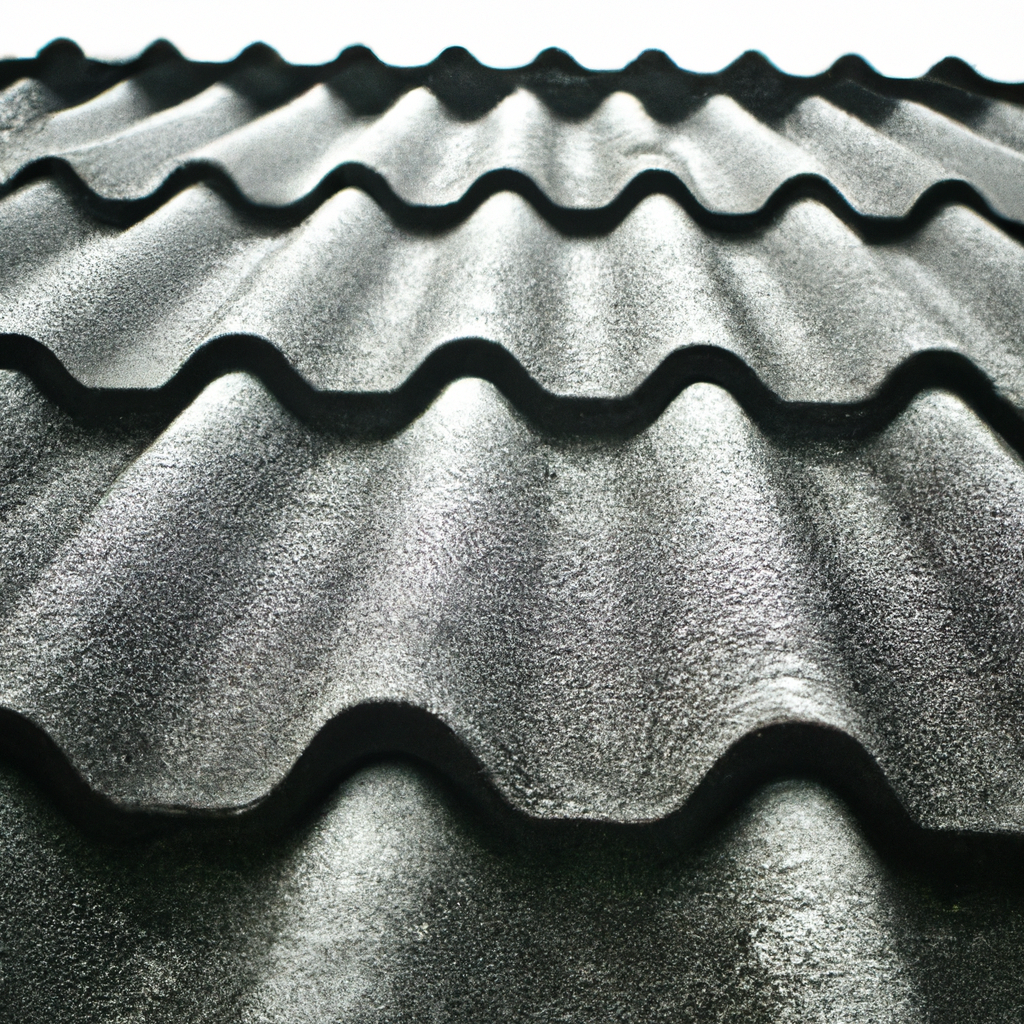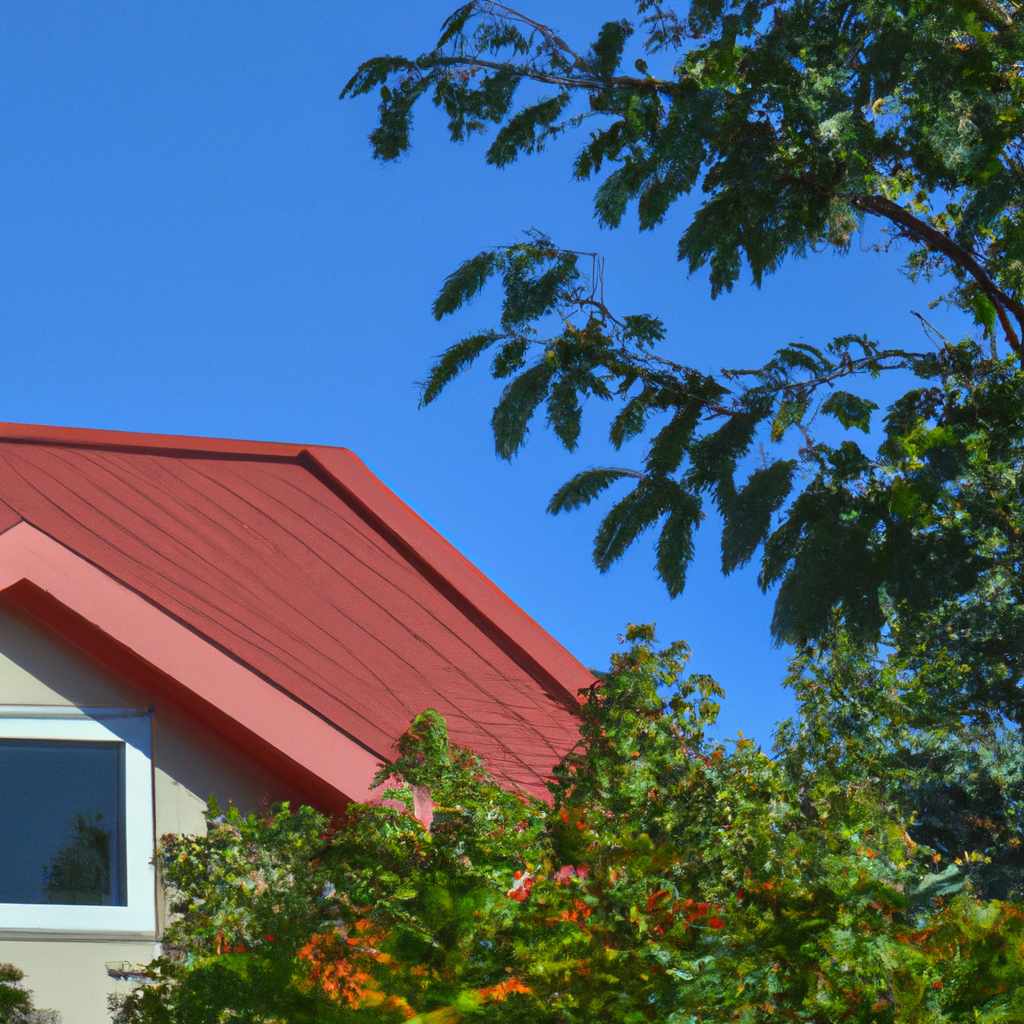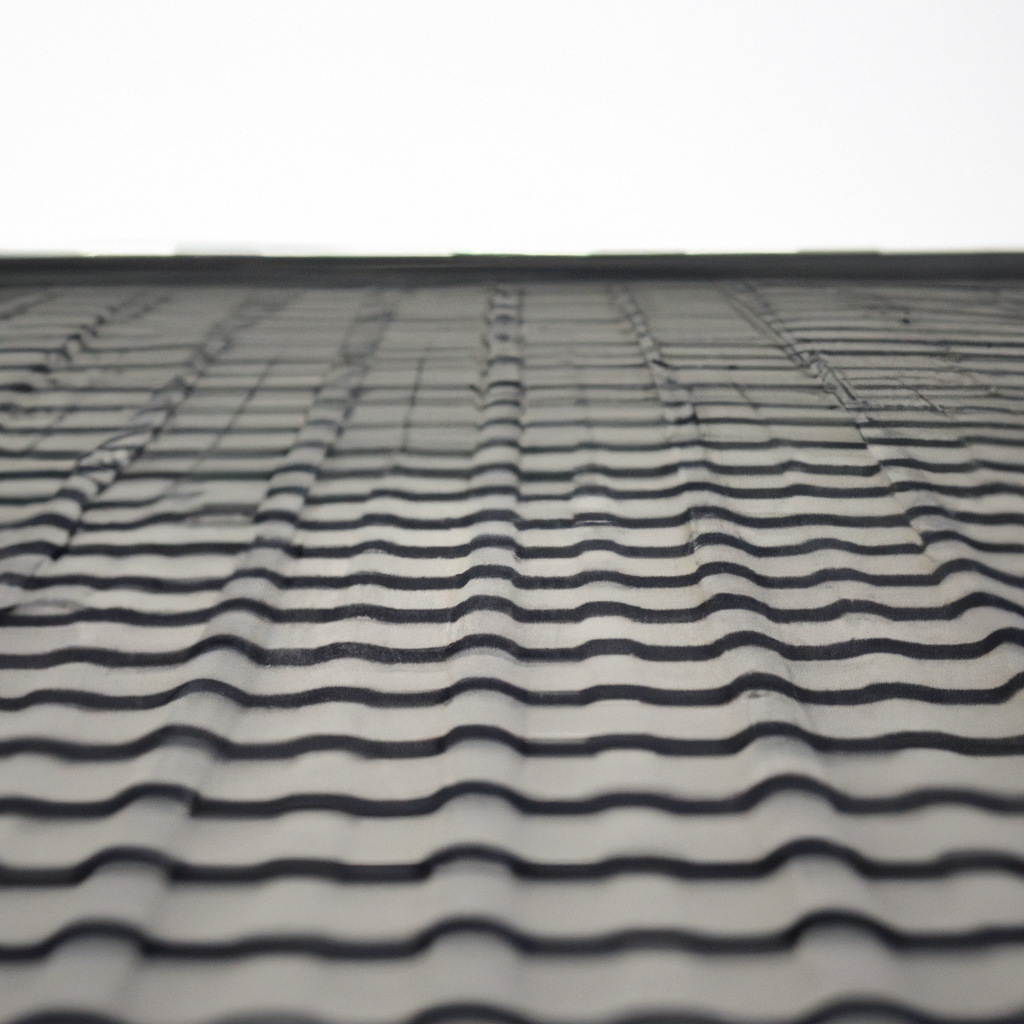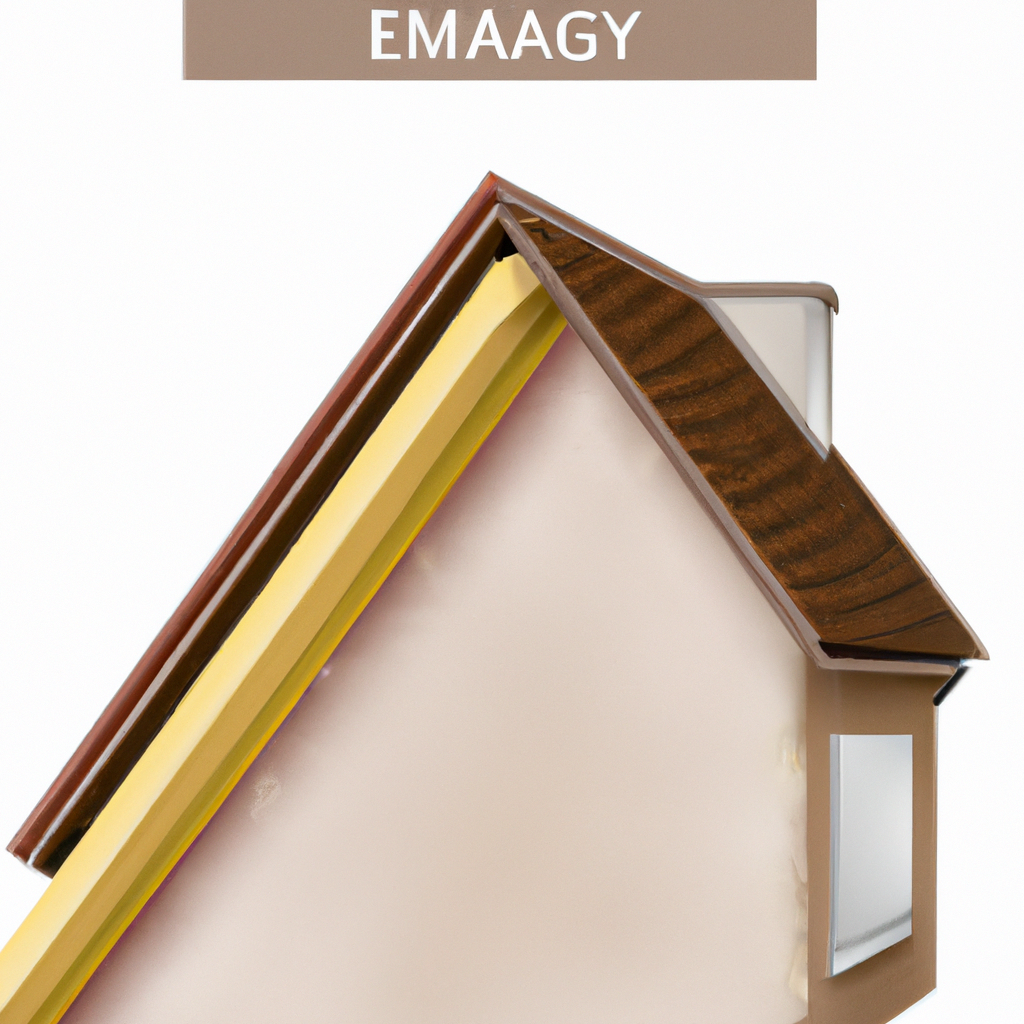Having a warm, comfortable home is one of life’s simple pleasures. As I curl up on the couch with a cozy blanket, sipping hot chocolate on a chilly winter evening, I’m thankful for my reliable heating system. But not all homes are created equal when it comes to retaining heat. Traditional heating methods like forced air can be inefficient, blasting warm air up to the ceiling while leaving cold floors and drafts. This is where roof-integrated heating solutions come in. By integrating the heating system directly into the roof, these innovative solutions provide whole-home warmth and unmatched energy efficiency.
Winter season, woman is warming up near radiator
In this comprehensive guide, I’ll walk you through everything you need to know about roof-integrated heating, from how the different systems work to their unique benefits. You’ll learn how climate, budget, and roof type factor into the decision making process. With the secrets to warm, cozy home heating unlocked, you’ll be equipped to make the best choice for your unique needs. Let’s dive in and explore the wonderful world of roof-integrated heating!
Importance of Heating in Home Comfort
Heating our homes is non-negotiable for comfort, especially for those of us in colder climates. Proper home heating improves quality of life and protects health. According to the World Health Organization, indoor temperatures below 66°F can negatively impact health, especially for vulnerable populations like the elderly and chronically ill. Home heating helps regulate humidity and reduce mold or mildew growth. It allows us to exist comfortably indoors during harsh weather. Heating improves sleep quality and keeps us energized and productive. For families with children or pets, adequate heating helps little ones thrive. Simply put, heating is foundational to a home’s liveability.
Overview of Heating Solutions
When it comes to whole home heating, there are a few primary options:
- Forced Air: Pushes heated air through ductwork via a central furnace. Relies on natural air circulation.
- Radiators: Metal enclosures containing hot water from a boiler that radiates heat. Requires extensive plumbing.
- Electric Baseboards: Heating elements along baseboards of exterior walls. The heat from resistance as electricity passes through.
- In-Floor Radiant: Tubing or heating cables embedded in flooring that gently warm via hot water or electricity.
- Fireplaces: Provide warmth from burning wood or gas. Heat output can be inconsistent.
Each method has pros and cons regarding efficiency, installation, climate suitability, and costs. Key differentiators often come down to whether systems use air, water, or electricity to transfer heat.
Definition of Roof-Integrated Heating
Roof-integrated heating incorporates the heating apparatus directly into the roof system rather than relying solely on forced air or standalone radiators. There are two main approaches:
1. Electric systems like radiant heat panels, heating cables, or conductive materials embedded above the ceiling.
2. Hydronic systems that circulate heated water through radiant tubing or panels integrated with the roof.
Roof-integrated systems harness radiant heating which directly warms people and objects rather than just air. This allows for greater comfort with lower energy use.
Working of Roof-Integrated Heating
Roof-integrated heating leverages the roof’s expansive surface area. Solutions evenly distribute heating elements across the underside of roof sheathing. Electric systems use heated wires or panels to create infrared radiation that’s absorbed by surrounding surfaces. Hydronic systems circulate hot water from a boiler through radiant tubing or panels screwed to roof decking.
This direct heating system is vastly more efficient than forced air which can waste energy trying to heat a full volume of space. With roof-integrated heating, warmth is emitted optimally from above to provide uniform comfort downstairs. The radiant heat gently warms floors, walls, furniture and people without drying the air. Convection still circulates some warmth but drafts are minimized.
Benefits of Roof-Integrated Heating
Roof-integrated heating systems offer unique advantages:
- Efficiency: By warming objects instead of just air, less energy is required for the same comfort level. Systems leverage the roof’s surface area for even heat distribution.
- Comfort: Radiant warmth from above envelops you in coziness without cold drafts or stuffiness. The floors are warm, the air quality is fresh, and there are no noisy blowers.
- Zoning flexibility: Roof systems allow easy customization of heat zones to match usage and maximize efficiency.
–Cost savings: Greater efficiency yields lower energy bills. Installation costs can be minimized since no ductwork is needed.
- Aesthetic appeal: No visible radiators or wall-mounted heating elements preserve aesthetics.
- Health benefits: Hydronic systems allow humidification which minimizes dry air. Air quality is improved with no circulated dust or allergens.
Now let’s explore the main roof-integrated heating solutions and how they uniquely deliver warmth and savings.
Exploring Electric Heating Solutions
Electric roof-integrated heating leverages electricity to produce radiant infrared heat from wires or panels fitted above the ceiling. This direct warmth gently heats the home without drying the air. Let’s look at the main electric options:
Understanding Radiant Heat Panels
Radiant heat panels are thin sheets embedded with electric resistance wires. The panels are mounted to the underside of the roof rafters. As electricity passes through the wires, they heat up and transfer warmth to surrounding surfaces via infrared radiation. Panels come in various sizes and shapes to optimize coverage. They can be controlled by thermostats and timers.
Benefits: Even heating, energy efficient, long lifespan, minimal maintenance, no HVAC needed
Downsides: Higher upfront cost, not ideal for vaulted ceilings
Insight into Heating Cables
Heating cables work similarly to panels using electric current to produce heat. Cables can be directly fastened to roof decking or woven into insulation above the drywall. Cables offer flexibility to heat custom zones in a roof system. They can also be used for heating floors or driveways.
Benefits: Very customizable, easier for DIY, can combine with insulation
Downsides: More complex installation, limited heat output from cables alone
Conductive Heating Explained
Conductive heating relies on conductive materials like graphite laminated onto roof sheathing instead of electric wires. An electric current runs through the graphite to warm the roof decking which then emits downward radiant heat.
Benefits: Simple, effective, limited components needed
Downsides: Conductive material costs, low heat output potential
Diving into Hydronic Heating Solutions
Hydronic heating uses hot water circulated through radiant tubing or panels fastened under the roof. The water is heated via a high efficiency boiler and pumped through a closed loop system. The hydronic warmth transfers into the home’s interior. Let’s explore the main hydronic options:
Radiant Tubing Unveiled
Radiant tubing is PEX or PERT flexible piping installed above the ceiling and below the roof. The tubing loops across roof rafters or floor joists with heat transferring through the plastic. Multiple temperature zones can be created by pumping water at different temperatures to different tubing loops.
Benefits: Very energy efficient, long lifespan, minimal noise, excellent for zoning
Downsides: Higher installation complexity, needs boiler system
Hydronic Panels Demystified
Hydronic panels (or mats) contain mini-tubing enclosed within thin aluminum sheets. Panels get screwed to roof decking with tubing loops running through them. As heated water flows through the tubing, the entire panel gently heats. Panels come in modular sizes for full coverage across a ceiling.
Benefits: Fast installation, excellent heat transfer, aesthetically pleasing
Downsides: More costly, complexity of boiler system
Boiler Systems Decoded
Hydronic heating requires a centralized boiler to heat water and circulate it through the closed loop system. Boilers can use gas, oil, electricity, solar thermal, or geothermal energy for heating the liquid. New high efficiency condensing boilers maximize energy savings.
Benefits: Centralized control, versatile energy sources, can integrate with domestic hot water
Downsides: Higher upfront installation costs, need space for the boiler
Solar Heating Solutions Explored
Solar power can also be harnessed for roof-integrated heating. Solar systems absorb free radiant energy from the sun to heat liquid or air. The thermal energy is then used to warm a home’s interior space. Let’s examine the main technologies.
Solar Panels: A Closer Look
Solar thermal panels contain tubes of fluid or air which heat up in sunlight. The absorbed heat gets transferred to water in a storage tank or hot air in an air handling unit. This thermal energy can then heat household water and space via standard hydronic or forced air distribution.
Benefits: Harness free solar energy, lower fossil fuel use, works in cold climates
Downsides: Dependent on sunny weather, higher upfront costs
Solar Collectors Uncovered
Solar air collectors are less common but have a simple design. They contain perforated black metal under glass which heats incoming air. Fans push the warmed air into the home’s HVAC ductwork or a thermal storage system for distribution.
Benefits: Basic technology, can integrate with existing HVAC
Downsides: Large collectors are needed, only works in hot, sunny climates
Evaluating Solar Heating Efficiency
Solar systems are very location dependent. Solar collectors require consistent sun exposure. Solar thermal works best for household water versus space heating which needs much more sustained energy input. In cold northern climates, solar contributes 10-25% of space heating needs. In temperate or Mediterranean climates, solar can provide 50-80% or more of home heating.
Climate Considerations for Heating
Heating needs and system performance differ across climate zones. Colder regions require greater heating capacity while warmer zones need more nuanced control. Let’s examine some key considerations based on climate:
Heating in Cold Climates
For heating dominant climates with sub-freezing winters, considerations include:
- Prioritize heating capacity and efficiency
- Ensure adequate insulation levels
- Favor radiant heating performance
- Allow for humidification
- Use automated setback thermostats
- Prevent ice damming on roofs
- Size boiler systems for peak cold weather demand
Heating in Mild Climates
In temperate climates with mixed seasons, focus on:
- Zone heating for shoulder seasons
- Efficient shoulder season performance
- Flexible control with smart thermostats
- Ability to open windows on warmer days
- Combination radiant and forced air systems
- Optimizing heating and cooling together
Heating in Warm Climates
For warmer regions with minimal winter chills, look for:
- Limited home heating needs
- Spot heating of living spaces
- Efficient cooling performance
- Integration of passive solar design
- Solar air heating potential
- Thermal comfort optimization
Roof Type and Heating Solutions
The type of roof plays an important role in the optimal heating solution. Let’s compare options for different roof shapes and materials.
Heating Solutions for Flat Roofs
On flat roof structures, key considerations include:
- Simplified installation of hydronic tubing or electric cables
- Flexible modular layout of heating panels
- Access issues if the roof is inaccessible
- Capability to conceal systems within insulation
- Minimal long-term penetrations needed
Electric cables or hydronic tubing are cost-effective flat roof options. Panels also work well.
Heating Solutions for Sloped Roofs
For sloped or pitched roofs, consider:
- Angled rafters may limit panel sizes
- Varied installation methods between rafters or under roof decking
- Accessibility for installation and maintenance
- Visibility of exterior penetrations
Thinner electric cables often work best for navigating rafters. Tubing can run perpendicular across rafters or under roof decking.
Heating Solutions for Metal Roofs
On metal roof structures, keep in mind:
- Conductivity benefits for electric and hydronic systems
- Potential condensation control needs
- Corrosion resistance of fasteners
- Reflectivity and solar heat gain impacts
- Sound dampening requirements
Metal roofs pair well with electric cabling installed directly to the underside. Condensation control is recommended.
Budget Considerations for Heating
Upgrading home heating systems represents a major investment. Comparing the full lifecycle costs helps identify the optimal long-term value. Let’s examine the key budget factors.
Understanding Initial Investment
The upfront equipment and installation costs are a primary budget consideration. Electric systems involve the heating panels or cables and installation labor. Hydronic systems also require the boiler unit and plumbing components. Lifecycle heating costs average:
- Electric radiant panels: $14-24 per sq ft installed
- Electric cables: $8-15 per sq ft
- Hydronic tubing: $20-35 per sq ft
- Hydronic panels: $25-40 per sq ft
Calculating Operating Costs
The system’s energy efficiency impacts ongoing heating costs. Electric options can minimize energy use with proper controls. Hydronic systems leverage high efficiency boilers. Factoring in your climate and utility rates helps estimate annual heating costs.
| System | Avg. Operating Cost |
|---|---|
| Forced Air | $400-650 |
| Electric Radiant | $300-500 |
| Hydronic Radiant | $350-550 |
Estimating Maintenance Costs
Minimal maintenance is needed for roof-integrated systems beyond control calibration and leak checks. Most electric systems last 20-25 years before panels or cables would need replacement. Hydronic components can last 25+ years with boiler replacement at 15-20 years. Budgeting $200-300 annually covers maintenance costs.
Assessing Roof Suitability for Heating
Before installing a roof heating system, it’s important to assess your existing roof’s structure and condition. Consider these factors:
- Roof framing – are rafters sized and spaced properly?
- Roof sheathing – is the decking in good condition?
- Attic ventilation – is airflow adequate?
- Roof age and lifespan – are repairs or full replacement needed first?
- Roof composition – are penetrations allowable and feasible?
- Attic space uses – is storage space or HVAC present?
Address any issues with your roof prior to installing an integrated heating system. This will maximize performance and prevent any risks of damage.
Choosing the Right Heating Solution
With so many options available, selecting the optimal system can feel overwhelming. Follow these steps for a methodical process:
- Clarify Needs: Determine heating requirements, problem areas, and efficiency goals.
- Evaluate Options: Research the solutions compatible with your roof and climate.
- Perform Cost Analysis: Compare installation and operating costs between solutions.
- Assess Complexity: Gauge your ability to install or maintain different systems.
- Choose Best System: Weigh all factors to pick the right heating method for your home.
Don’t hesitate to enlist a qualified professional to help assess your needs, provide recommendations, and size systems accurately. Their expertise can prove invaluable for making the smartest decision.
Installation Procedures Overview
Proper installation is crucial for roof-integrated heating systems to perform safely and efficiently. While some basics apply across methods, each technology has unique considerations.
Importance of Professional Installation
Due to complexity, I strongly recommend using professional installation unless you possess robust technical expertise. The specifics of system layout, sizing, wiring, and control integration are best left to experienced tradespeople. They have the skills to optimize performance and minimize installation issues that could lead to poor efficiency or safety hazards. The incremental cost of professional installation over DIY will pay dividends in added system longevity.
Guide to DIY Installation
For simpler electric systems like cables in new construction, DIY installation may be reasonable for handy homeowners. Be sure to:
- Follow all manufacturer requirements
- Never overload circuits
- Use extreme care when working in attics
- Seal penetrations thoroughly
- Have wiring inspected before closing up ceilings
Always defer to professionals if you have any reservations about safely installing a roof heating system yourself.
Ensuring Installation Safety
Some key guidelines to maintain safety include:
- Shut off power fully before starting work
- Follow proper precautions on ladders or in attics
- Avoid overheating during soldering or welding
- Use extreme care when penetrating roofs
- Test for leaks on hydronic systems
- Verify electrical load handling capability
- Check for damage during or after installation
Never compromise safety – the risks of injury, fire, or system damage are too high.
The Role of Energy Efficiency
To maximize savings from a roof heating system, it’s crucial to optimize your home’s energy efficiency. An inefficient building shell will lead to wasted heating capacity. Prioritizing upgrades like insulation, air sealing, and new windows means your new system won’t have to work as hard. Let’s explore key efficiency opportunities:
Enhancing Efficiency with Insulation
Improving attic insulation is a top priority before installing roof-integrated heating:
- Most homes benefit from R-49 to R-60 attic insulation levels
- Seal and insulate attic hatches or pull-down stairs
- Ensure proper ventilation to avoid moisture buildup
- Use high density insulation like rigid foam board to prevent settling
Monitoring and Managing Energy Consumption
Beyond insulation, optimizing your overall energy use helps minimize heating needs:
- Install a smart thermostat to set back temperatures at night or when away
- Seal air leaks around doors, windows and penetrations
- Upgrade to energy efficient lighting and appliances
- Use timer switches and occupancy sensors to control plug loads
- Check for excess humidity and ventilate properly
- Monitor energy use patterns and set goals for reduction
Small lifestyle changes like lowering thermostats a few degrees and shorter showers also trim energy waste and save money.
Regular Maintenance of Heating Systems
To achieve the expected lifespan of roof heating systems, periodic maintenance is essential. Follow the manufacturer’s recommendations for maintenance tasks and frequency. Typical upkeep includes:
Addressing Repairs Promptly
- Inspect tubing and seals annually before the heating season for hydronic systems – address any leaks immediately
- Check the condition of electric cables and connections – repair any damage
- Clean intake filters and vents on boiler or HVAC equipment
- Test operation of thermostats, pumps, and other controls
Ensuring Longevity and Durability
- Flush and treat hydronic loops for optimal water chemistry
- Lubricate circulating pumps and valves
- Verify optimal coolant levels and pressure in boilers
- Clean radiant panels of any dust or debris
With simple routine care, roof heating systems will provide decades of ultra-reliable service and savings.
Case Study: Residential Heating
To understand how roof-integrated heating performs in real homes, let’s look at this case study:
The Challenge:
Kara purchased a 1950s Cape Cod style home in a cold climate. The old cast iron radiators and boiler delivered insufficient heat upstairs. Energy costs were escalating.
The Solution:
- Hydronic radiant panels were installed on the upstairs bedroom ceilings along with a new high efficiency boiler
- Smart thermostats optimized heating schedules and created comfort zones
- Attic insulation was upgraded to R-50 level
The Results:
- Even warmth throughout the upstairs with cozy floors
- 20% lower natural gas heating costs
- Warmer surface temperatures allowed the thermostat setback to 68°F
- Improved air quality and humidity levels
- Estimated 15-20 year lifespan for equipment
This case illustrates how roof-integrated hydronic radiant delivery paired with efficiency upgrades can transform comfort and energy savings!
Case Study: Commercial Heating
Besides residential applications, integrated roof heating also works wonderfully for commercial buildings. Check out this case study:
The Challenge:
A small office building had problems with uneven hot and cold spots as well as excessive energy bills from an aging rooftop HVAC system.
The Solution:
- Hydronic tubing was installed between roof trusses to heat the high ceiling open plan office
- Separate PEX loops personalized heat for perimeter private offices
- High efficiency gas boiler replaced rooftop units
The Results:
- Office staff comfort and productivity improved noticeably
- HVAC energy use reduced by 35% annually
- Quick 4 week installation during evenings
- Estimated 20+ year lifespan for tubing
- Even, draft-free environment for employees
This example demonstrates the value of integrated roof hydronic systems for enhancing comfort and efficiency in commercial real estate.
Innovative Heating Solutions in Action
Beyond conventional options, some unique roof-integrated heating solutions are worth noting:
- Carbon heating films made of graphene layered on roof decking
- Hybrid photovoltaic and thermal solar panels that produce electricity and heat
- Salt hydrate modules that store solar heat in chemical form as latent energy
- Transparent solar collectors installed as skylights or windows
- Thermoelectric generators that convert temperature differences into electricity
- Phase change materials like waxes that absorb and release thermal energy
The future is bright for technology advancements that will expand capabilities while reducing costs and environmental impact.
FAQ: Roof Compatibility
Are roof-integrated heating systems compatible with all roof types and materials?
Most solutions can work with common roofing materials like asphalt, wood, metal, and PVC. The main limitations are roof age and condition. Heating systems perform best on newer roofs that are structurally sound. Attics also need proper ventilation and adequate clearance for installation access. Always consult a roofing specialist to evaluate your specific roof.
FAQ: Installation Costs
How much does it cost to install roof-integrated heating?
Installation costs vary from $10-20 per square foot on average depending on the specific solution. Electric systems range from $8-15 per square foot installed. Hydronic systems cost $20-40 per square foot including the boiler. Get multiple quotes from qualified local contractors to compare pricing. Focus first on choosing the optimal system for your needs, then compare fair pricing for installation.
FAQ: Eco-Friendliness of Heating Solutions
Which roof-integrated heating solutions are the most eco-friendly?
Solar thermal and geothermal hydronic systems are the greenest options for heating homes with minimal carbon footprint. However, all integrated heating solutions are much more efficient than conventional forced air or baseboard electricity. Even hydronic systems fueled by natural gas win on efficiency versus standard furnaces. And smart thermostats paired with any roof system also boost eco-friendliness.
Recapitulation of Heating Solutions
To recap, the main roof-integrated heating solutions include:
- Electric radiant panels
- Electric heating cables
- Hydronic radiant tubing
- Hydronic panels (mats)
- Solar thermal systems
Key differentiators are electric vs. hydronic delivery, required ancillary equipment like boilers, capacity for custom zoning, installation complexity and costs, visual aesthetics, and overall efficiency.
Future Trends in Integrated Heating
We can expect continuous innovation in integrated roof heating driven by:
- Advanced materials like graphene films, nano-coatings, and phase change materials
- Expanded adoption of renewable solar thermal technologies
- Growth in hybrid electric and thermal solar systems
- Greater integration of monitoring and smart controls
- Prefabricated heating components for simplified installation
- Improved cold climate heat pump technology
The aim, as always, is to push efficiency and comfort ever higher while minimizing costs and environmental impacts. Judging by the progress so far, the future looks promising!
Making an Informed Heating Decision
I hope this guide has demystified the solutions for integrated roof heating so you feel empowered to make the smartest choice possible. Key steps include:
- Evaluating your climate, heating requirements, budget, and roof conditions
- Researching all available options fully
- Consulting professionals to identify optimal heating system
- Comparing fair quotes for purchasing and installing
- Considering long-term comfort, efficiency, and costs
Don’t settle for discomfort or unaffordable energy bills. Contact top local heating contractors today to map out your integrated roof heating renovation. Transform your home into a heavenly haven of warmth and coziness this winter!
Additional Guide on Roof-Integrated Heating
For an expanded look at the benefits, technologies, installation considerations, and costs of integrated roof heating, check out my Ultimate Guide to Radiant Roof Heating Systems. This bonus resource dives deeper into:
- Principles of radiant heating
- Comparing electric vs. hydronic systems
- Heat emission surfaces like gypsum board, aluminum panels, and thermoplastic membranes
- Insulation recommendations and attic ventilation best practices
- HVAC integration considerations
- Ideal applications, limitations, and technical considerations by building type
- Steps for proper installation and integration with other building systems
- Cost data for installed commercial and residential systems
- Troubleshooting common issues
Don’t miss this in-depth companion guide to make the smartest possible heating decisions for your home or commercial building. Just click below to get the Ultimate Guide to Radiant Roof Heating Systems now!
Finding Professional Installation Services
Once you’ve selected the ideal roof heating solution, it’s vital to hire qualified installers. Consult these resources:
- National Radiant Professionals Alliance (www.nrrpa.org)
- Radiant Panel Association (www.radiantpanelassociation.org)
- International Association of Plumbing and Mechanical Officials (www.iapmo.org)
- Manufacturer certified installers
- Local builder recommendations
- Home shows
- Online reviews
Be sure to verify the required licensing, training, certifications, and expertise in radiant heating. This ensures proper installation and safety.
Tips for Maximizing Energy Efficiency
To reduce waste and maximize savings from your new heating system:
- Seal all leaks and gaps with caulk, spray foam or weatherstripping
- Add insulation to meet recommended levels
- Install smart programmable thermostats
- Use thick curtains on all windows
- Replace HVAC air filters regularly
- Upgrade old appliances to energy efficient models
- Switch to LED lighting throughout the home
Also, engage in an energy audit to reveal hidden efficiency opportunities. Small improvements add up to big savings!
